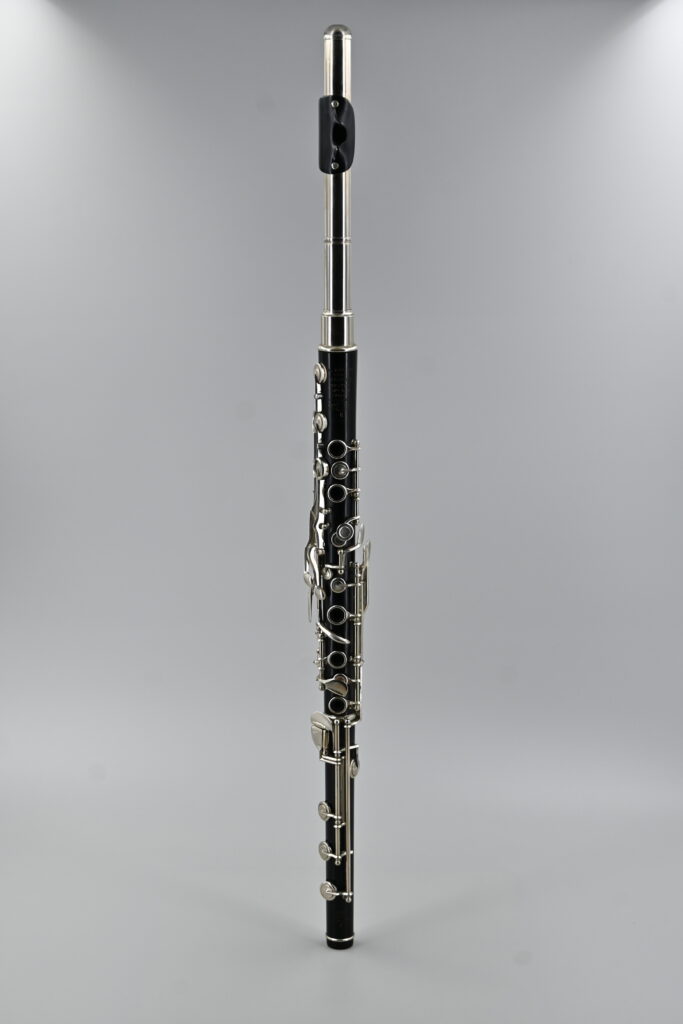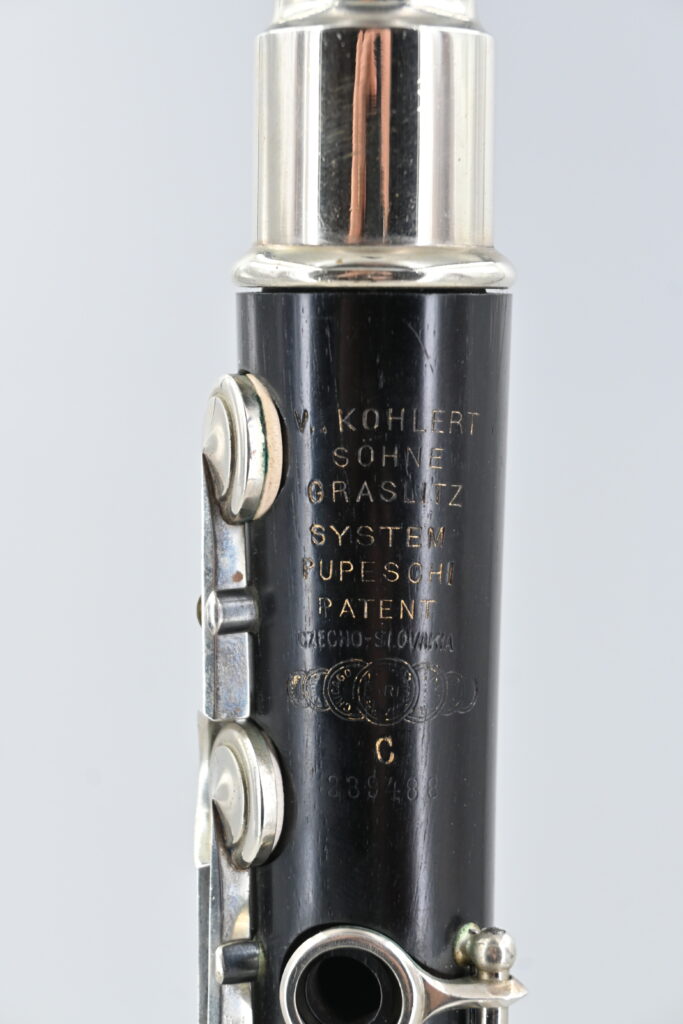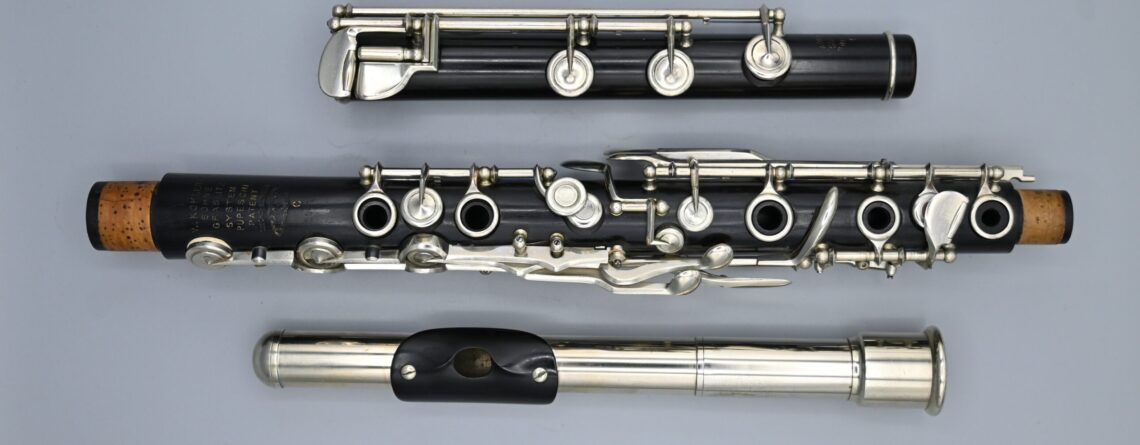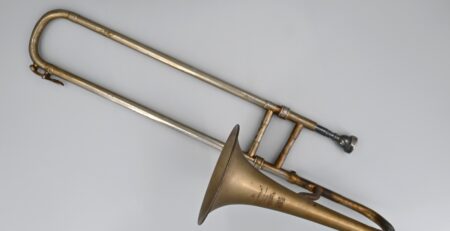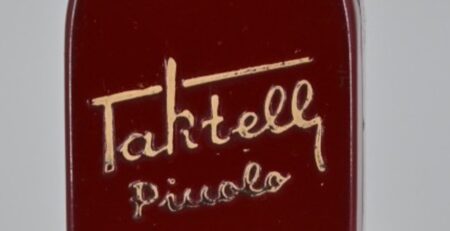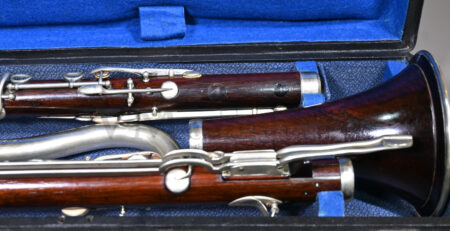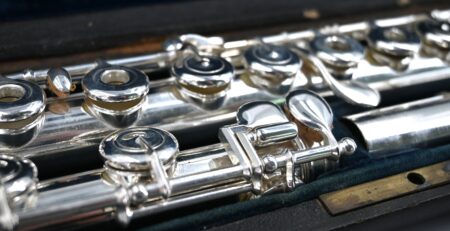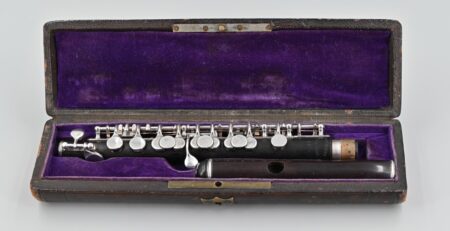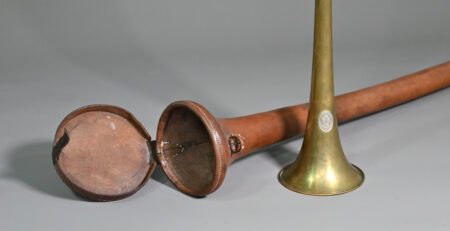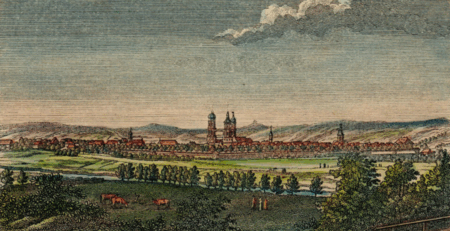Reform flute – V. Kohlert Söhne with Pupeschi system
This reform flute was made by V. KOHLERT SÖHNE. The Kohlert company was founded in 1840 by Vincenz Ferarius KOHLERT in Graslitz, now Kraslice in the Czech Republic. At the turn of the century, the company changed names to V. Kohert Söhne when Vincenz Ferarius died and was then under ownership of his sons, Rudolf, Daniel and Franz. The company became the largest German instrument maker. Its 600 workers produced the whole range of brass, woodwind and double-reed instruments.
During WWII, the company’s instrument production dwindled. This was because most factories were limited to producing war materials. When the war ended in 1945, things changed dramatically for the Kohlerts – the company was nationalised. In September of that same year, a cooperative of musical instrument manufacturers was established in Kraslice called AMATI and V. Kohlert Söhne had to form part of the cooperative. The Kohlerts were then workers in their own factory. They eventually migrated to West Germany in 1948 where they set up a new workshop in Winnenden.
We can date this flute to around 1910. It features the Pupeschi system.
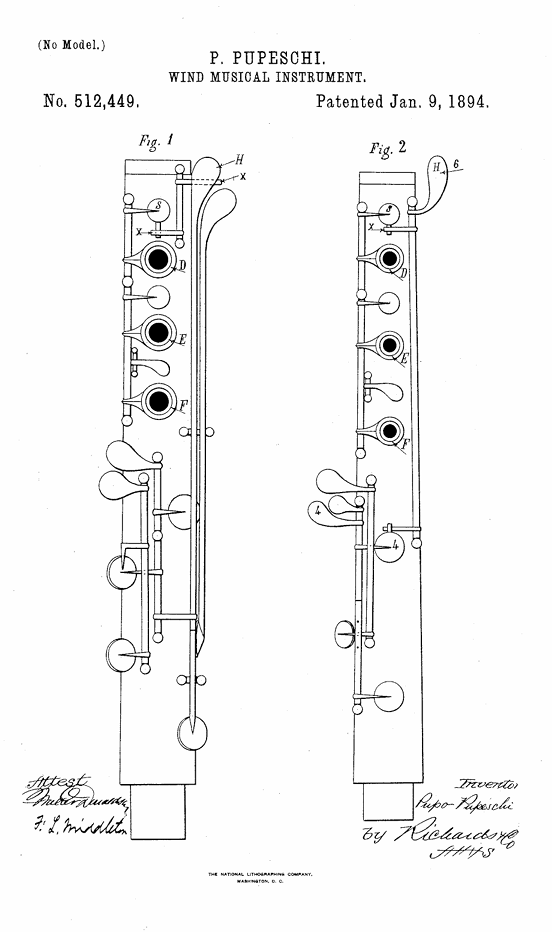

Pupo PUPESCHI (1859–1932) was an inventor and wind instrument maker from Florence, Italy. He was active making instruments in the city from around 1885. In 1892, he patented improvements for the clarinet and oboe. He believed it would be possible to use these ideas for other instruments, including the flute, too.
The Pupeschi system in the case of this flute, involves the small finger of the left hand, which is positioned near the usual G-sharp key. By pressing this key, a second G-sharp key and two ring keys of the right hand are opened. This flute also features a tuning slide in the head joint.
The flute plays at around a=438 Hz. It has a shiny, bright sound.
